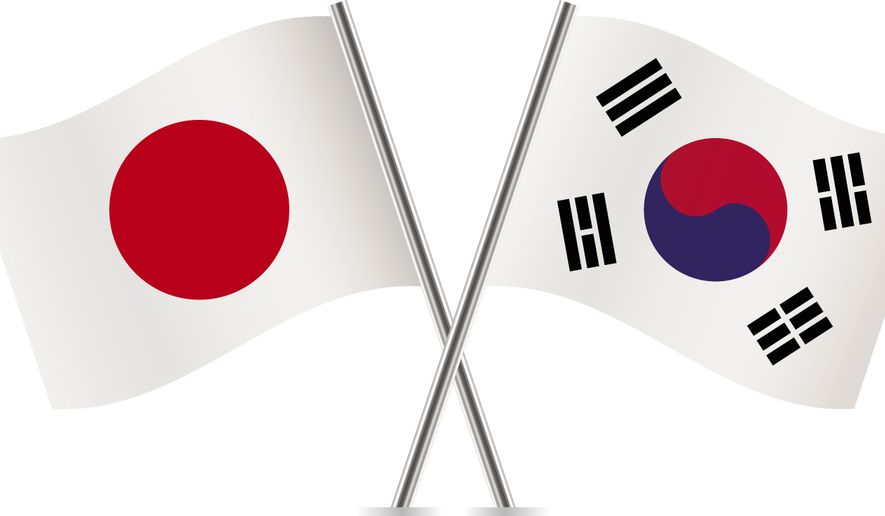Japan will host the G-7 Summit in Ise-Shima in May as a nation facing the most complex issues in balancing regional and global powers to keep the peace, while also maintaining strong forward motion with their economy.
Speaking to the 190th Session of the Japanese Diet in January, Prime Minister Shinzo Abe acknowledged the difficulty of creating economic growth in an aging society with a falling birthrate, and an increasingly perilous security environment in the region.
In foreign affairs, as difficult as it is to live with China, that nation remains the most important neighbor for Japan in the region. Relations with South Korea appear to be easing somewhat due to progress in the “comfort women” issue.
“The linchpin for conducting this diplomacy is the Japan-U.S. Alliance,” Mr. Abe said.
Japan’s Foreign Minister Fumio Kishida, who also addressed the Diet on Jan. 22, elaborated on what Tokyo calls “the three pillars of Japan’s foreign policy.”
Echoing Mr. Abe, Mr. Kishida said, “The first pillar is strengthening the Japan-U.S. Alliance,” which “is more robust than ever.” He cited Mr. Abe’s visit to the U.S. in April 2015, where he and President Obama affirmed “the alliance would continue to play a leading role in ensuring peace and stability in the region and the world.”
Mr. Kishida mentioned plans to relocate the Marine Corps Air Station from Ginowan City to possibly Henoko on Okinawa, which could potentially alleviate a sore spot in U.S.-Japan relations.
Japan’s second pillar is enhancing relations with China and Korea. This has been difficult given generally increasing tensions between China and all its neighbors. China disputes Japan’s claim on the Senkaku Islands in the East China Sea, which Japan annexed in 1895 after emerging victorious in a war with China. More alarming, especially for the Philippines, Indonesia, Malaysia, Vietnam and Taiwan is that China has been piling sand onto reefs in the South China Sea, creating seven new islands (so far), which it claims as sovereign Chinese territory and is building ports, military facilities and runways on them.
On the positive side for normalization, last November the Japan-China-ROK Trilateral Summit convened for the first time in almost four years. Plans are still being worked on for Japan’s hosting of the summit this year.
With regard to North Korea, Mr. Abe has called the recent nuclear tests and missile launches “totally unacceptable” and a “serious provocation,” in violation of numerous U.N. Security Council resolutions. But with very little in the way of economic ties to North Korea, there aren’t a lot of cards on the table for Japan to play.
With South Korea, however, there is renewed hope of a thaw in their frosty relations of the past few years: The landmark agreement recently reached by South Korea and Japan to resolve the “comfort women” issue was welcomed by both countries.
Japan had made many attempts to eliminate Korea’s historical resentment over Korean women being forced to work in Japan’s wartime brothels, but these efforts all fell short, emotionally or financially, in the eyes of most Koreans. Finally, on Dec. 28, 2015, the proper remorse was expressed and a payment of a billion yen ($8.3 million) was deemed sufficient for the foreign ministers of both countries to use the phrase “finally and irreversibly resolved.” It is said the monetary payment will be used to aid the women, of which only about 45 are still living out of estimates as high as 200,000 women.
South Korean President Park Geun-hye and Mr. Abe said they would use this opportunity to boost bilateral ties in other areas. One area that has been sorely neglected is joint security. Tensions between Tokyo and Seoul had the two countries sharing vital military information with each other in a roundabout routing through the United States. But in the face of an increasingly aggressive China and an erratic North Korea, this was seen by both sides as being unworkable. Ms. Park told Mr. Abe she “hoped that since the two governments worked through a difficult process to reach this agreement, they can cooperate closely to start building trust and open a new relationship.”
Japan’s third foreign policy pillar is promoting economic diplomacy as a means of driving the growth of the Japanese economy.
Japan pins great hopes on the Trans-Pacific Partnership Agreement it is forging with the U.S., and looks forward to signing and implementing it as soon as possible. In addition, Japan continues to reach out to the world by participating in trade and partnerships. Mr. Abe said, “We (Japan) will, in order to further enlarge free and fair economic zones, accelerate such negotiations as the Japan-EU Economic Partnership Agreement … as well as the Regional Comprehensive Economic Partnership … that includes India and China. We will boldly push forward economic integration and take advantage of overseas vitality for Japan’s growth.”
Pro-growth, pro-innovation, pro-increasing the birthrate “Abenomics” is the prime minister’s platform. In January, Mr. Abe unveiled his “Plan to Realize the Dynamic Engagement of All Citizens,” which involves rewarding companies that raise or eliminate mandatory-retirement ages, and other incentives designed to encourage people in all sectors to be productive members of the economy late into their lives.
• Larry Moffitt is vice president of The Washington Times Foundation and formerly vice president for the Tiempos del Mundo newspapers in the Americas.




Please read our comment policy before commenting.